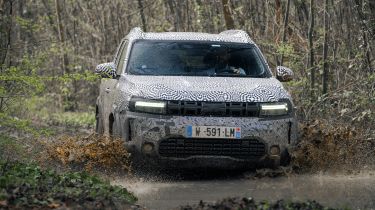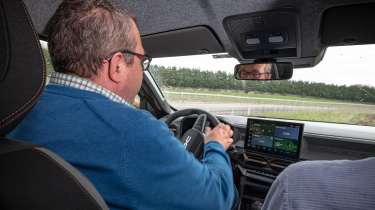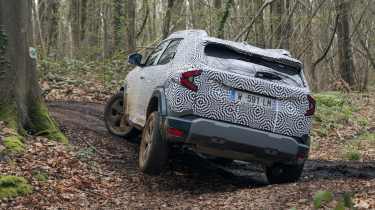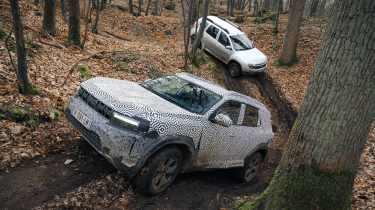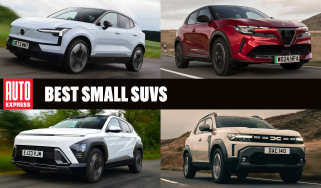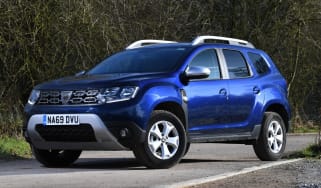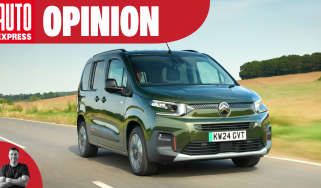Dacia Duster off-road test: going where no cheap 4x4 has gone before
We discover that when the going gets tough, the latest 4x4 Duster gets going
A sea of muddy ruts stretches out before us. Wisps of steam are floating up from the tyres and engine bay, accompanied by a faint whiff of a well used transmission. It’s sunny overhead, but a week of solid rain has created treacherous conditions. And a giggling Frenchman is sitting beside me, telling me that I’m being far too cautious with the throttle pedal. This, it turns out, is where the Dacia Duster really earns its spurs.
It’s perhaps the strongest link to the origins of this model that it remains one of very few SUVs of its size and price to be offered with both front- wheel drive and four-wheel drive. The Duster is a car loved across Europe and beyond these days, after all, but it was originally created to satisfy demand in emerging markets – regions where asphalt roads frequently give way to gravel tracks, where baking-hot summers are answered by painfully cold winters. In UK terms the 4x4 is a niche model; in the wider sales mix it accounts for one in every five examples sold.
This, in turn, brought a significant challenge to the team tasked with engineering the third generation of Duster, codenamed P1310. Because after two iterations on the same platform, this latest version was always destined to jump across onto CMF-B, the Renault Group’s small-car architecture. It’s a well proven set of parts that underpins everything from the Renault Clio, Captur and Arkana to Dacia’s own Sandero – but none of these vehicles is offered with four-wheel drive. So Team Duster was presented not only with a terrific opportunity to upgrade the model’s tech and powertrains, but also the potential banana skin of delivering a car that isn’t as capable when the going gets rough.
But the engineers are confident that they’ve seized the opportunity and avoided the pitfall – and we’re in France to see how they’ve done it.
Our base for today is Renault’s Aubevoye test facility. Sprawling over 613 hectares of Normandy countryside, it comprises more than 30 circuits totalling in excess of 35 miles. The secret tracks are all hidden from public view, of course, but our Duster runs are to have an additional layer of disguise, because instead of thrashing around the comparatively open high-speed bowl with the Renault 5 prototypes, we’re heading for tree cover – specifically, some woods measuring around a third of a mile wide, and two miles in length.
The trees are so close together that in some areas you can barely see more than a few feet ahead, but between them runs a tortuous route that makes use of pretty much every scrap of bad camber, every gulley, every hill, every tree stump.
Philippe Turchet knows pretty much all of it personally, we’re told. He’s an Aubevoye veteran who’s spent more time sliding around in here than he’d care to remember. He’s evidently had more than one unintended interface with the scenery, too; we’re barely 100 yards into our sighting run in a camo-wrapped Duster prototype before he’s pointing at scarred bits of tree and muttering: “Oui, je te connais.” – “Yes, I know you.”
It turns out, we soon learn, that Dacia took a predictably pragmatic approach to the transition to CMF-B. There was nothing inherently wrong, after all, with how the previous car put power through the rear wheels, so the 4x4’s multi-link back axle is a subtle reworking of the Mk2 Duster’s hardware – “some minor adaptation”, the engineers call it. And with that bit taken care of, the team then spent the real time and money exploiting the extra electronics and processing power afforded by the more modern architecture. So while the new Duster’s AWD system may look broadly familiar, how the car uses it is not.
Maxime Jublot is the man responsible for the third-generation SUV’s engineering execution, and he points out the specific requirements that the team faced. “Duster 4x4 is not an extreme off-roader like a Land Rover Defender or even a Lada Niva; it has to be at ease on roads,” Jublot tells us. “But users need to know that they can rely on it to get between two locations where there isn’t a proper road, or to drive up into the mountains when they want to go skiing or do outdoor pursuits.”
The big change between this generation and its predecessor is logic, Jublot says: how the system distributes the torque front to rear. Dacia’s supplier-partner GKN worked hard on it, harnessing the potential of the greater processing power to offer a finer gradient of detail, defining more precise parameters for specific use scenarios.
A prime example of this is choosing the ‘lock’ setting. On the old Duster, this fixed the amount of torque being sent to the rear wheels; on the latest version it defines the percentage than can be allocated, but the system will take back some of that torque to the front wheels if it feels it’s not really needed. This, in turn, helps to reduce the amount of driveline shunt when you are completing really tight turns or manoeuvres.
We’re getting a solid demonstration of that very activity from Truchet, as he shows absolutely no mercy to our prototype – one of the last pre-prod examples, a vehicle that escaped the final cold-weather testing in Sweden but is destined, like most test cars, to be pulled apart and destroyed once the final calibration has been completed.
At first it feels like it might be lucky to make it that far, as our driver points it through a gap that’s one branch narrower than a Duster, then into the sort of deep bowl that could easily be a bomb crater. At this point he begins a deft dance on the pedals, but by the time we’re in the deepest point the throttle is nailed, as Truchet tries to give the Duster the best chance possible of making it up the extremely steep, wet, leaf-strewn slope in front of it.
Within seconds we’re at the top, remarkably unflustered. I clamber out of the passenger seat and slither over the surface to check the tyres; I’m convinced we have to be on something chunky. But not really; our car is using Continental-branded 3-Peak Mountain Snow Flake rubber – a rating of winter tyres to you and me, but some way off what you could sensibly call specialised off-road tread.
“Obviously winter performance is very important,” Jublot says, “and the snow tests were a big success. There’s a hill at the test site in Arjeplog [the car industry’s cold-weather playground in Lapland] where you can take the easy route up or the twisty route. To be honest, we weren’t absolutely sure that Duster would be able to do the harder test; it’s really designed for more extreme 4x4s than this.
But it managed it. That’s another example of where the new control software really helps; we’ve fine-tuned the modes more closely in their named conditions, like Sand and Snow. Then we’ve checked here at Aubevoye that those settings don’t result in significant compromises in on-road behaviour from elements such as the stability-control system.”
All the while, behind us, Loïc Feuvray is keeping pace with our Mk3 Duster in an original- generation model. An engineer with more than three decades of experience, and the program manager for the original Duster, he’s seen as a handy touchpoint for the current team.
Jublot says: “It’s really useful to have people like Loïc and Philippe, who have lived and breathed Duster, tested the model around the world and here, to give their experience on how the new one is performing.” The answer is very well – although it’s hard not to grin as Feuvray keeps making it through the tricky sections in the old model, almost as if he’s making a point.
Finally, it’s our turn to see what the Duster can do, in the hands of a non-engineer and through those deep ruts. Maxime tells me to get up to about 10mph and try to maintain speed. But I soon realise that might be easier said than done, because the moment the Duster hits the quagmire hiding beneath the grassy surface, it starts to squirm as the wheels become upset by the varying levels of grip beneath them.
We’re still crabbing forwards, but Jublot is now saying: “More power, give it more power, much more power!” I reckon we’re now treading a fine line between drifting through this field in a blaze of glory and sinking axle deep. But just as all seems lost, with the nose of the Duster pointing about 70 degrees east of the straight ahead, the car gets the message, juggles the 1,650Nm-plus of torque that can arrive at the wheels and pulls itself right again. I feed in a quick steering input, but fundamentally this vehicle, based on a platform that was originally developed for superminis, has just clawed its way through conditions that would flummox SUVs costing twice or three times as much.
Jublot gives the pre-production dashboard a friendly pat, as if to congratulate our prototype for not letting the side down. And it’s hard not to share his admiration, because between Truchet’s off-roading prowess and our own, more ham-fisted approach, we’ve seen more than enough to attest to the Mk3 Duster’s abilities in slippery conditions. The hordes of customers in the south of France who buy examples in base 4x4 spec to drive to the beach in the summer and the Alps in the winter should be more than satisfied.
Better still, as we drive along a simple gravel track back towards the test track proper, we’re struck by how supple the Duster feels over what is, frankly, the type of unpaved road that the SUV is most likely to end up facing. That more complex rear suspension set-up delivers the squidginess that made the previous generations such a great all-round choice.
We feel compelled to comment on how well this Dacia prototype soaks up the dirt-road imperfections at 25mph. There are knowing looks between the engineers both old and new – and smiles; the sort that come with the knowledge of a job well done.
The new Duster is here but what's next? Dacia's CEO reveals the budget brand's masterplan...
Find a car with the experts

